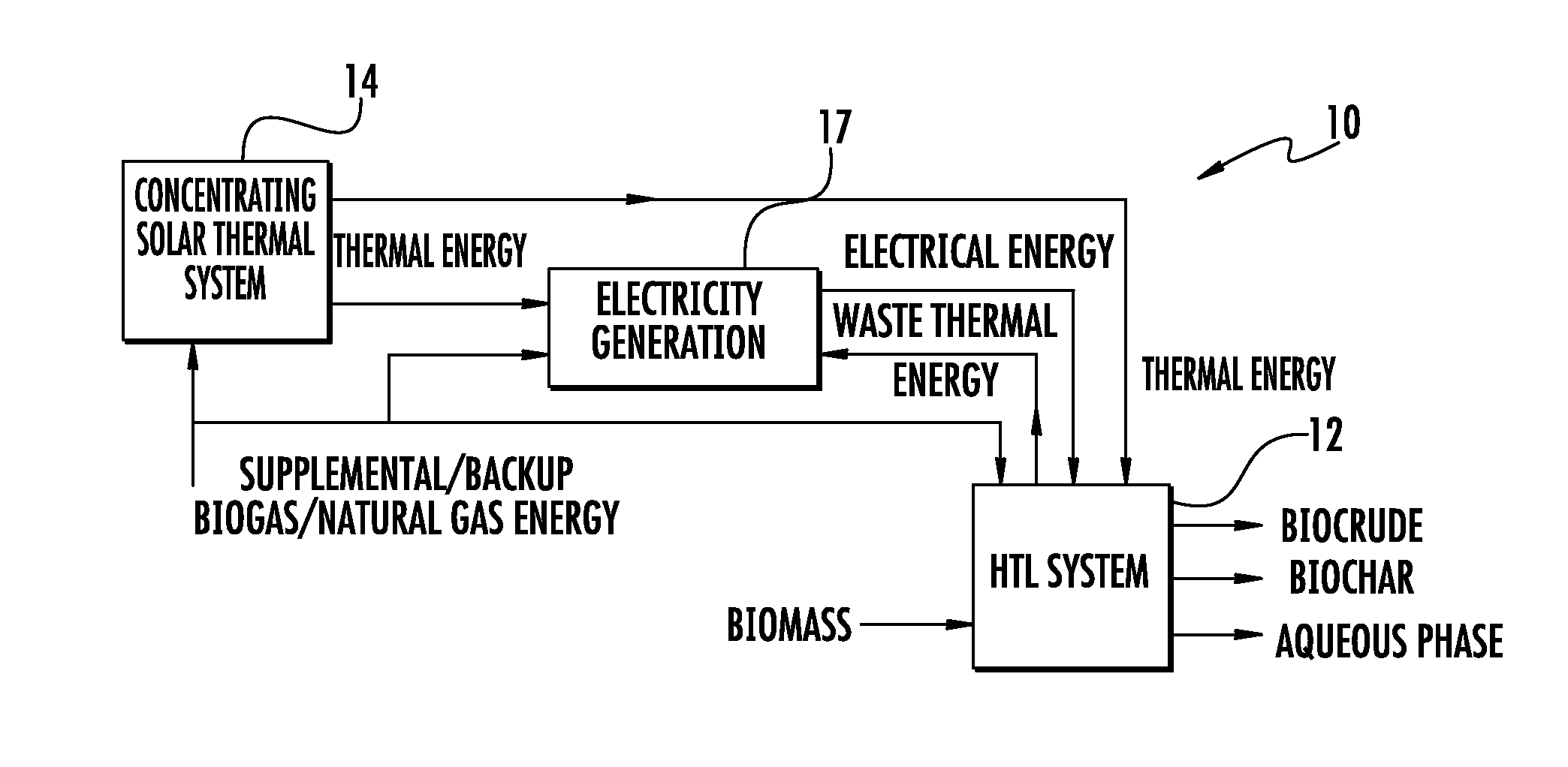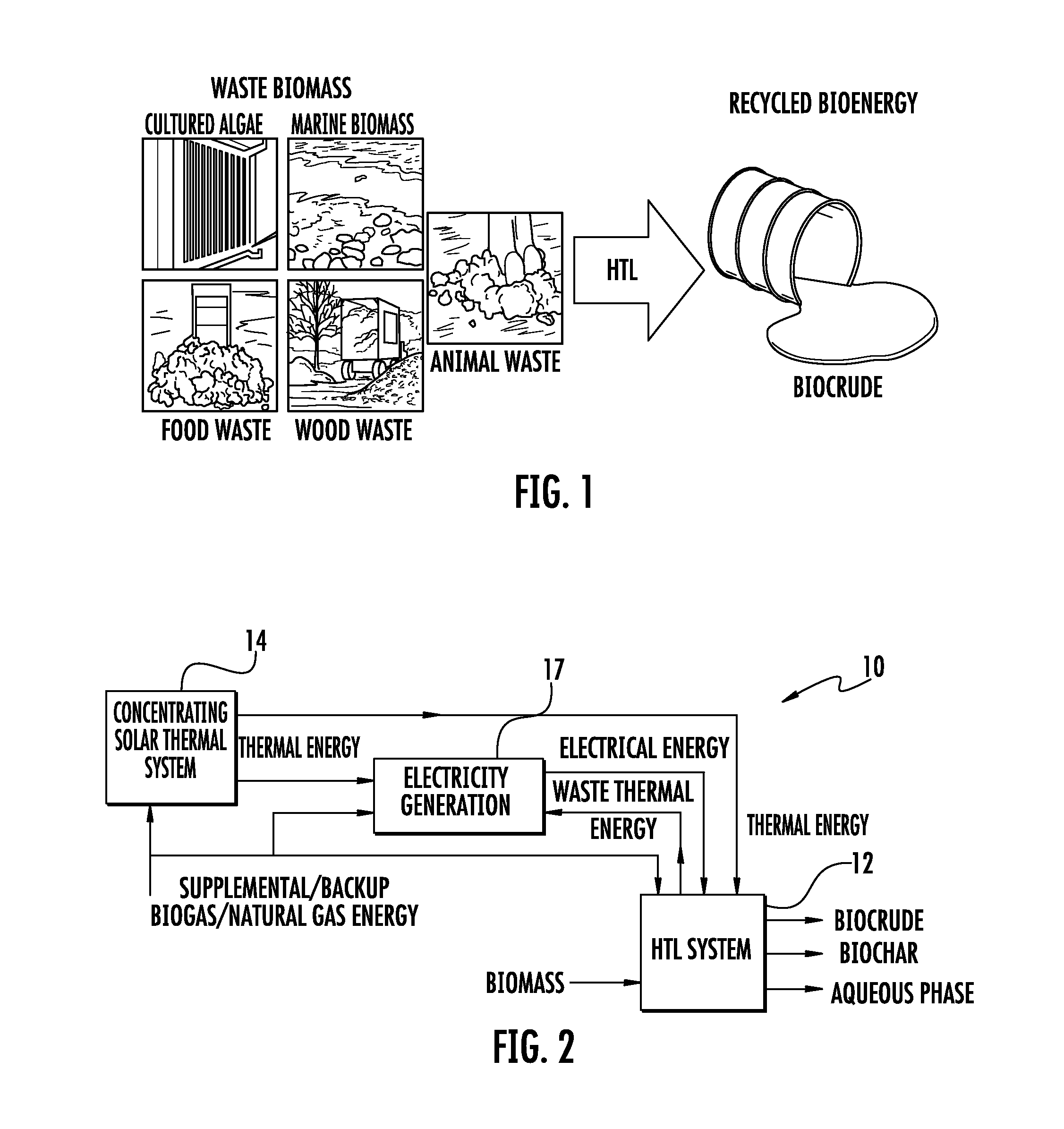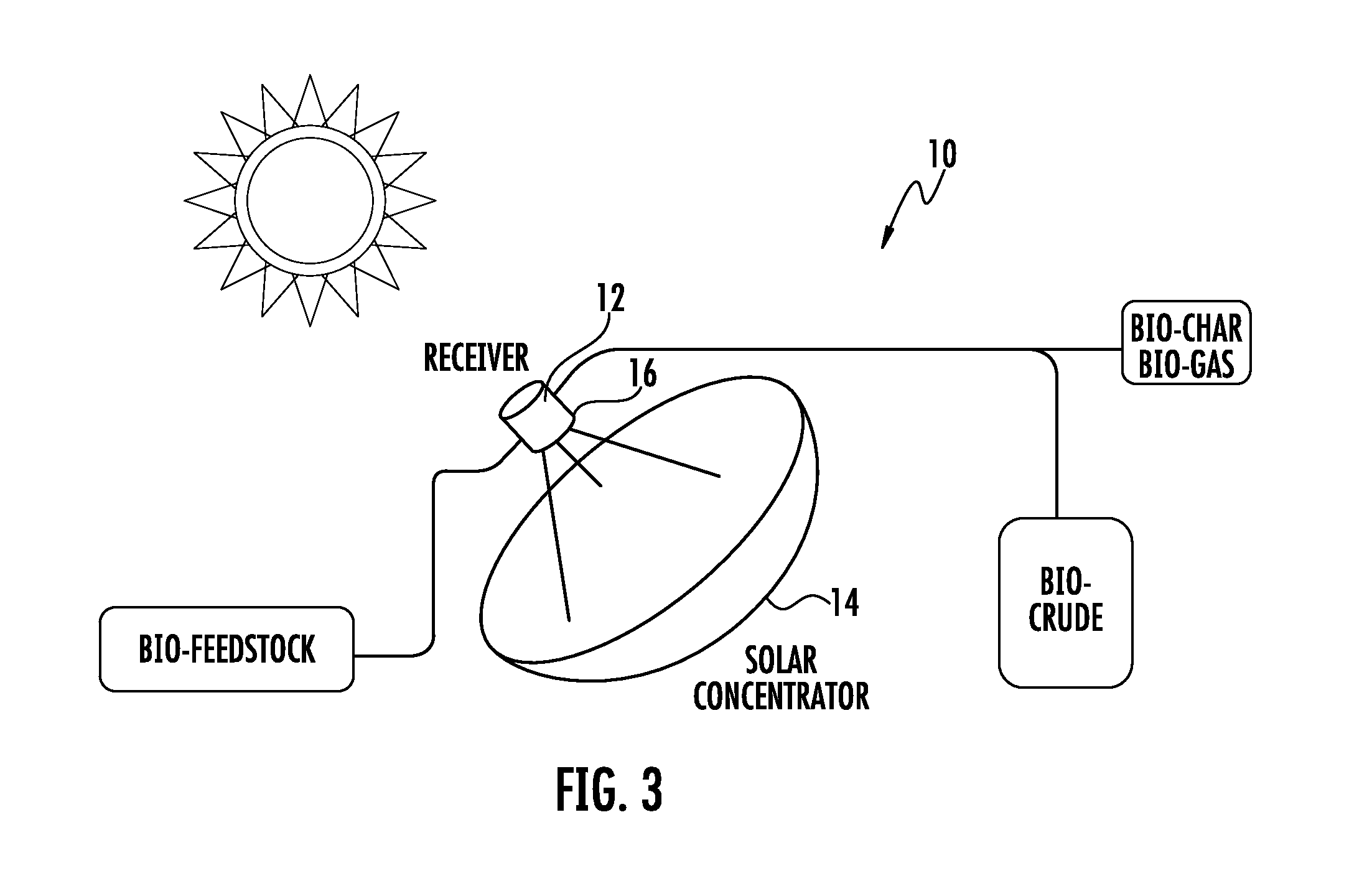Systems and methods for converting biomass to biocrude via hydrothermal liquefaction
- Summary
- Abstract
- Description
- Claims
- Application Information
AI Technical Summary
Benefits of technology
Problems solved by technology
Method used
Image
Examples
Embodiment Construction
[0030]Described herein are systems and processes of providing novel thermal energy sources for hydrothermal liquefaction (HTL) reactors. For example, various implementations include a novel hydrothermal liquefaction (HTL) reactor that uses solar thermal concentration technology in a novel way such that the energy barrier for the HTL process is removed. According to various implementations, the systems and processes use concentrated solar thermal energy from a focused high-energy beam to provide sufficient energy for driving the HTL biomass-to-biocrude process. The concentrated solar thermal energy may be collected via various solar thermal energy concentrating mechanisms, including, for example, a concave dish, parabolic mirrors, and Fresnel lenses, and the solar thermal energy may be used directly or indirectly, such as via heat exchange fluids, by the HTL reactor.
[0031]In addition, other implementations convert biowaste, such as municipal biosolids and grease and food waste, to bi...
PUM
 Login to View More
Login to View More Abstract
Description
Claims
Application Information
 Login to View More
Login to View More - R&D
- Intellectual Property
- Life Sciences
- Materials
- Tech Scout
- Unparalleled Data Quality
- Higher Quality Content
- 60% Fewer Hallucinations
Browse by: Latest US Patents, China's latest patents, Technical Efficacy Thesaurus, Application Domain, Technology Topic, Popular Technical Reports.
© 2025 PatSnap. All rights reserved.Legal|Privacy policy|Modern Slavery Act Transparency Statement|Sitemap|About US| Contact US: help@patsnap.com



